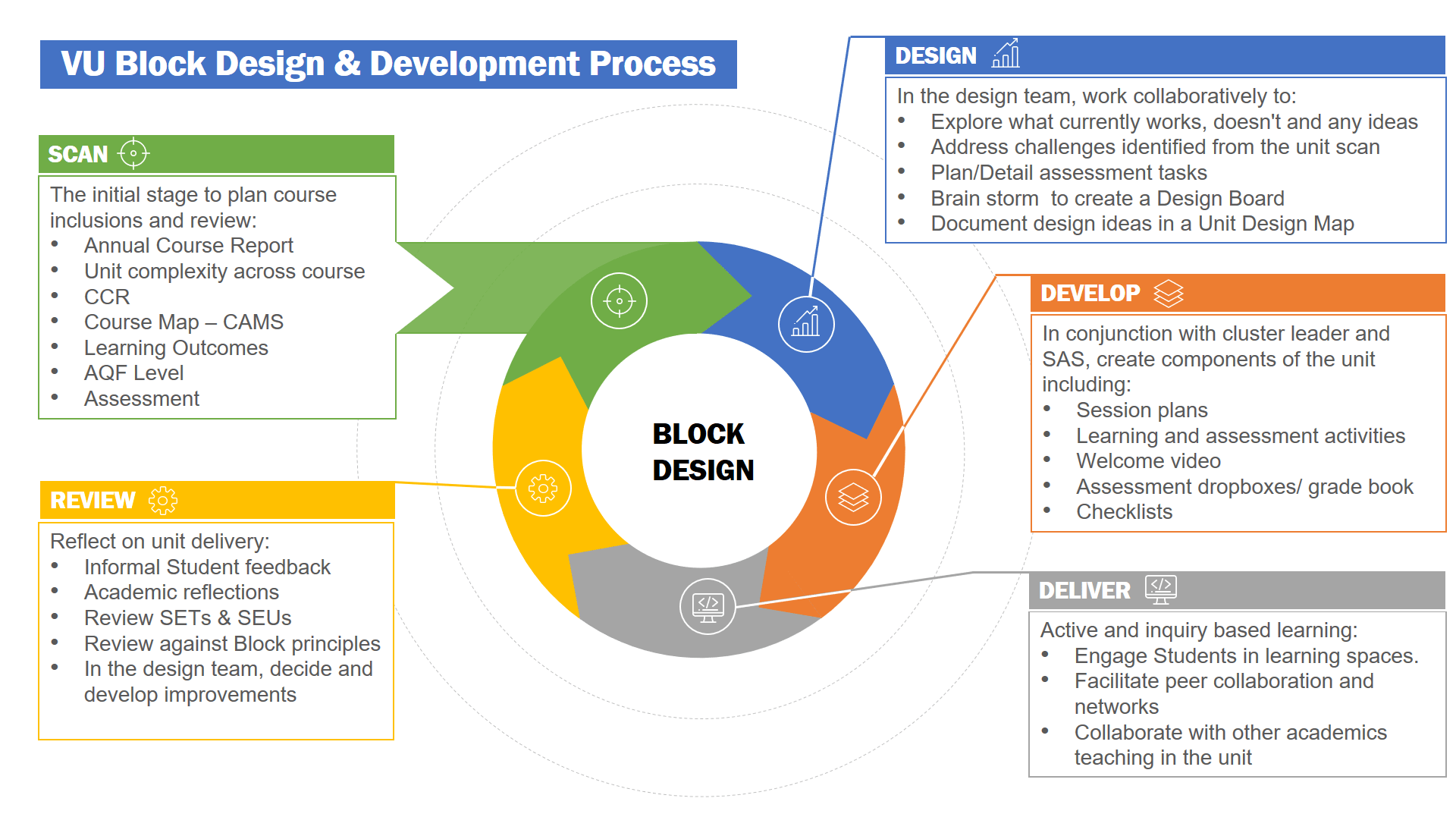Students as Co-creators of the Curriculum
Friday 5 July: Conference day three, 10:30am – 11:00am parallel session
Venue
Room 3 – 303-G15 Sem
Presenter
Aleksandra Trifkovic
Victoria University, Australia
aleksandra.trifkovic@vu.edu.au
Jodie Gibbons
Victoria University, Australia
jodie.gibbons@vu.edu.au
Overview
Victoria University has implemented an initiative referred to as ‘The Block Model’ to revolutionise the tertiary education experience. With inspiration via a global context, the block model was introduced to enhance student experience and success. Referred to as an innovative and radical approach to tertiary education, it involves redesigning and rethinking the traditional 12-week subject into a 4-week learning period whereby students concentrate, immerse and complete one subject every four weeks (a block), and where students are actively guided to achieve the intended learning outcomes. To accomplishing this, the block model’s design and development process was put in place (see Figure 1). This process consists of five stages–Scan, Design, Develop, Deliver and Review–which involves the collaboration of design teams comprised of academic staff, learning designers, library staff, project officers and students-as-staff (SAS). In order to ensure that the students’ voice and experience is heard, SAS contribute to the curriculum design and development whilst providing constrictive feedback throughout the process. In an ever-changing world, an importance is placed on the tertiary education system to adapt to individual and industry demands. This emphasises a culture of continuous growth and learning, enhancing student success and applicability to the workforce. Common clashes of the traditional model such as juggling multiple units at the same time and maintaining a work/life balance may restrict a student to reach their full potential. The block model was implemented to acknowledge student concerns and achieves this by including the perspective of students in the development process. The outcome of introducing students as co-creators in the development of the block model is a learning experience that is interactive, student-centred, with real-world relevance. This resulted in a significant increase in student success, engagement, and provided staff with a greater understanding of the student learning experience.

Figure 1. VU Block Design and Development Process
The diagram depicts a course development life cycle. The stages are scan, design, develop, deliver, review, and the cycle repeats.
Selection of sub-theme
This presentation will address HERDSA’s sub-theme of ‘students’ with a particular focus on learning, working in partnership, technology, wellbeing and success. The Australian first model transforms learning by creating a student-centred active learning approach that promotes academic achievement, wellbeing and success. Throughout the curriculum design and development process, students-as-staff work in partnership with design teams and academics to create student-centred active learning experiences. The focus of this presentation will be to consider students as co-creators in curriculum design and development in the block model and the results. We will present the processes involved, the role and contribution of students as university staff and co-creators, as well as the impact on student success. By sharing and reflecting on our experience we aim to to transform ideas surrounding students at the forefront of tertiary education.
References
Aitkinson, F. (2018). VU’s block model success: improved grades and retention. https://www.vu.edu.au/about-vu/news-events/media-releases/vus-block-model-success-improved-grades-and-retention
Bovill, C., Cook‐Sather, A., & Felten, P. (2011). Students as co‐creators of teaching approaches, course design, and curricula: implications for academic developers. International Journal for Academic Development, 16(2), 133-145.
Felten, P., Bagg, J., Bumbry, M., Hill, J., Hornsby, K., Pratt, M., & Weller, S. (2013). A call for expanding inclusive student engagement in SoTL. Teaching and Learning Inquiry, 1(2), 63-74.
Könings, K. D., Seidel, T., & van Merriënboer, J. J. (2014). Participatory design of learning environments: integrating perspectives of students, teachers, and designers. Instructional Science, 42(1), 1-9.
Matthews, K. E., Dwyer, A., Hine, L., & Turner, J. (2018). Conceptions of students as partners. Higher Education, 1-15.
Powell, S. (2019). New kid on the block proves a hit. The Australian, 23. https://www.vu.edu.au/sites/default/files/the-australian-block-model.pdf
McCluskey, T., Weldon, J., Smallridge A. (2018). “Rebuilding the First-Year Experience, One Block at a Time” in proceedings of the Students Transitions Achievements Retention and Success (STARS) conference, Auckland, NZ.
Presentation topic
Students – Working in partnership
